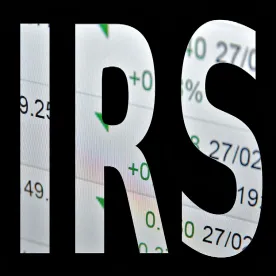The Internal Revenue Service (IRS) has released a long-awaited proposed rule to implement section 45Q of the Internal Revenue Code, the statutory provision that creates a tax credit for capturing and sequestering carbon dioxide. The proposed regulations clarify several issues, but invite confusion about others. This On the Subject highlights key features of the proposed regulations.
IN DEPTH
Background: Tax Code Section 45Q
Section 45Q allows taxpayers to claim a tax credit for each metric ton of “qualified carbon oxide” the taxpayer captures from a “qualified facility” and then either stores or uses in a manner that prevents its release into the atmosphere. What counts as “qualified carbon oxide” depends on the type of “carbon capture equipment” that is used.
For equipment placed in service prior to February 9, 2018, and also for “direct air capture” facilities, the only substance that counts is carbon dioxide—the most ubiquitous greenhouse gas. See, Section 45Q(c)(1)(A) & (C). But for carbon capture equipment placed in service after February 9, 2018, the statute defines “qualified carbon oxide” more broadly; the definition includes carbon dioxide and also any “other carbon oxide.” See, Section 45Q(c)(1)(B).
That broad definition is striking because the term “carbon oxide” is not widely used in US environmental regulations. The term “carbon oxide” does not appear even once in the Clean Air Act’s 562-page greenhouse gas reporting rule. See, 40 C.F.R. Part 98. Further, a Google search for “carbon oxide” likely results in the message “did you mean carbon dioxide?”
The amount of the tax credit authorized by section 45Q varies, depending on two factors: (1) when the facility’s “carbon capture equipment” is placed in service, and (2) what the taxpayer does with the “qualified carbon oxide” after capturing it. For factor two, the statute gives the taxpayer three options: (a) dispose of the qualified carbon oxide in “secure geological storage,” (b) use it as an injectant in enhanced oil recovery operations and then dispose of it in secure geological storage, or (c) “utilization.” The statute defines utilization as: (i) “fixation” through photosynthesis or chemosynthesis, such as by growing algae, (ii) conversion to a material or chemical compound in which the qualified carbon oxide is “securely stored,” or (iii) use as a product in a commercial market “as determined by” the US Secretary of the Treasury.
The statute authorizes the IRS to issue whatever regulations may be necessary to implement section 45Q. It also expressly directs the agency to issue regulations concerning certain specific topics, including rules “for determining adequate security measures” for secure geological storage and rules for recapturing the benefit of any tax credit allowed for qualified carbon oxide that ceases to be captured. The Proposed Regulations, released May 28, 2020, follow guidance released February 19, 2020. That guidance, Notice 2020-12 and Revenue Procedure 2020-12, addressed the begin-construction requirement and partnership allocation rules for the carbon capture credit.
Key Features of the Proposed Regulations
1. Qualified Carbon Oxide
The proposed regulations follow the statutory text in defining “qualified carbon oxide” by reference to the type of carbon capture equipment that is used and when that equipment is placed in service. See, Prop. Reg. § 1.45Q-2(a). For “direct air capture facilities,” the only qualified carbon oxide is carbon dioxide. The same is true for carbon capture equipment placed in service prior to February 9, 2018. However, for every other type of carbon capture equipment, the tax credit is available for “any carbon dioxide or other carbon oxide.”
The regulations do not define “other carbon oxide,” and the regulatory preamble indicates that the IRS and the US Department of the Treasury consider the statutory definition of “qualified carbon oxide” to be “clear” and subject to “broad acceptance and use” by “industry participants, environmental groups, and stakeholders.” In fact, however, the term “carbon oxide” is not widely used in the US greenhouse gas regulatory regime. The US Environmental Protection Agency (EPA) has used the term in fewer than 10 notices published in the Federal Register; it has used the term “carbon dioxide” in more than 1,200.
2. Secure Geological Storage
Like the statute, the proposed regulations contemplate a tax credit for “qualified carbon oxide” that is captured and disposed of in “secure geological storage.” See, Prop. Reg. § 1.45Q-3(a). The proposed regulations provide some clarity about what counts as “secure geological storage,” but may also generate confusion unless the IRS provides further clarification:
-
Prop. Reg. § 1.45Q-3(a) provides that “secure geological storage” includes, but is not limited to, storage at deep saline formations, oil and gas reservoirs and unminable coal seams.
-
Prop. Reg. § 1.45Q-3(b), in turn, provides that a taxpayer will be deemed to have complied with the secure geological storage requirement in three specific situations. Those situations are where the “qualified carbon oxide” is: (1) stored in compliance with Subpart RR of the Clean Air Act’s greenhouse gas reporting rule; (2) used as an injectant in enhanced oil recovery operations and then stored either in compliance with Subpart RR or in compliance with alternative standards endorsed by the American National Standards Institute (ANSI); (3) injected into a well that complies with federal Underground Injection Control regulations.
Critically, the proposed regulations do not use the word “and” or “or” between situations (2) and (3). That invites confusion about whether clause (3) applies in addition to clauses (1) and (2), or as an alternative to them. To be sure, the regulatory preamble suggests that clause (3) applies to a specific type of storage activity (storage in an underground injection well) and that taxpayers using such wells must also comply with either clause (1) or clause (2). But the point would be clearer if it were made in the regulatory text itself, not merely in the preamble.
The proposed regulations also beg the question of whether the three listed situations are the only situations where a taxpayer will have been deemed to comply with the secure geological storage requirement, or if there might be other unlisted situations that are also compliant.
Finally, neither Subpart RR nor the alternative ANSI standard mention the term “carbon oxide.” Both documents repeatedly use the term “carbon dioxide” and appear to be limited to that substance. By citing Subpart RR and the ANSI standard, the proposed regulations provide a compliance pathway for taxpayers that are sequestering “carbon dioxide.” However, it is not at all clear that the regulations provide a compliance pathway for taxpayers sequestering any other substance.
3. Utilization and the Life Cycle Analysis Requirement
Taxpayers that capture “qualified carbon oxide” do not have to use the “secure geological storage” approach to qualify for a tax credit. Taxpayers can also obtain a tax credit by “utilizing” the captured qualified carbon oxide in the manner allowed by section 45Q. That is, they can claim a tax credit if they capture carbon and then use that qualified carbon oxide by growing algae, converting it into a form that is “securely stored” or using it for any other purpose for which a commercial market exists—as determined by the IRS. But how can taxpayers calculate the amount of the tax credit for such utilization? And what commercial markets does the IRS recognize?
The proposed regulations leave those questions largely unanswered. With respect to the tax credit amount, the statute provides that the amount of the credit must be based on “an analysis of lifecycle greenhouse gas emissions.” The proposed regulations, in turn, provide that taxpayers must provide a written life cycle analysis report to the IRS and the US Department of Energy, and that the IRS “will determine whether to approve” that analysis. See, Prop. Reg. § 1.45Q-4(c)(3). The implication is that if the IRS rejects the taxpayer’s analysis, the tax credit will not be available. But the proposed regulation does not in fact say that in express terms. Nor does the proposed regulation explain how long the IRS will take to approve or reject the taxpayer’s analysis or what standards the IRS will use in conducting its review. Perhaps the IRS’s approach would be to use something similar to the private letter ruling process, effectively ruling on the eligibility for the project or process for section 45Q purposes. The proposed regulation is also silent as to which commercial markets qualify.
4. Recapture
The proposed regulations provide a framework for how and when the tax credit is recaptured if qualified carbon oxide leaks during the recapture period. Without this recapture guidance, taxpayers would likely not make the capital investments that this program was intended to incentivize. For this purpose, qualified carbon oxide ceases to be captured, disposed of or used as a tertiary injectant if the leaked amount of qualified carbon oxide in the taxable year exceeds the amount disposed of in secure geological storage or used as a tertiary injectant in the same taxable year. After a leak is discovered, the quantity of the leak under the applicable environmental regulations must be certified by an independent engineer or geologist. The recapture amount is equal to the product of the quantity of recaptured qualified carbon oxide (in metric tons) and the appropriate statutory credit rate.
The recapture period begins on the date of first injection for disposal and ends on the earlier of (i) five years after the last taxable year in which the taxpayer claimed a section 45Q credit or (ii) the date monitoring ends in accordance with the environmental regulatory requirements under Subpart RR or ANSI described above. The length of time for which monitoring is required under the environmental standards depends in large part on how long the specific CO2 injection well used by the taxpayer remains in operation. That period could be more or less than five years, depending on the specific well.
The proposed regulations provide a mechanism for taxpayers to take the recapture of the credit into account in the taxable year in which the leak is identified and reported rather than amending an earlier return in which a credit was taken. The recapture is taken into account and calculated on a last-in, first-out (LIFO) basis, such that the leaked amount that exceeds the amount of qualified carbon oxide disposed of in the current taxable year will be deemed attributable first to the prior taxable year, then to the taxable year before that, up to a maximum of the fifth preceding year.
The proposed regulations provide an exception to credit recapture if the loss of containment is triggered by volcanic activity, a terrorist attack or other events unrelated to the selection, operation or maintenance of the storage facility.
5. Contractual Arrangements for Carbon Sequestration
A taxpayer may claim the section 45Q credit if the taxpayer contracts with a third party to carry out the sequestration, provided the arrangement meets certain requirements. See, Prop. Reg. § 1.45Q-1(h)(2). The taxpayer must contractually ensure in a binding written contract that another party will physically carry out the disposal, injection or utilization of the qualified carbon oxide in accordance with the proposed regulations. To satisfy the binding written contract requirement, the contract must be enforceable under state law and must not limit damages to a specified amount. The contract must require commercially reasonable terms and require that the party physically carrying out the qualifying activity satisfies the regulatory requirements to be eligible for the section 45Q credit pursuant to Prop. Reg. § 1.45Q-(3) and -(4). Further, the contract must require the contracting party to report and provide all necessary information about a recapture event.
The proposed regulations allow flexibility for a taxpayer to enter into multiple contracts with multiple parties for the disposal, injection or utilization of the qualified carbon oxide. The existence of each contract and the parties involved must be reported to the IRS on an annual basis on Form 8933, Carbon Oxide Sequestration Credit, by each party to the contract.
If the taxpayer contracts with a third party to dispose of qualified carbon oxide, utilize qualified carbon oxide or use qualified carbon oxide as a tertiary injectant, the taxpayer additionally may elect to allow such third party to claim the associated section 45Q credit. See, Prop. Reg. § 1.45Q-1(h)(3). The electing taxpayer may not claim any section 45Q credits that are allowable to a credit claimant and may elect to allow a credit claimant to claim the full amount or a partial amount of section 45Q credits arising during the taxable year. An electing taxpayer may elect to allow a single credit claimant or multiple credit claimants to claim section 45Q credits in the same taxable year. If an electing taxpayer allows multiple credit claimants to claim section 45Q credits, the maximum amount of section 45Q credits allowable to each credit claimant is proportional to the amount of qualified carbon oxide disposed of, utilized, or used as a tertiary injectant by the credit claimant. Similarly, in the event of a credit recapture due to leaked qualified carbon oxide, the recapture amount must be allocated on a pro rata basis among the taxpayers who claimed the section 45Q credit. A credit claimant may receive allowances of section 45Q credits from multiple electing taxpayers in the same taxable year.
The election must generally be made no later than the time prescribed by law (including extensions) for filing the federal income tax return or Form 1065 for the year in which the credit arises. The election generally may not be filed with an amended federal income tax return for tax years beginning after the issuance of the proposed regulations. Taxpayers may file an amended return, subject to certain limitations, to make the election for any taxable year ending after February 9, 2018 and beginning before the issuance of the proposed regulations.
6. Public Comments
Interested stakeholders can participate in the IRS’s rulemaking by submitting comments on the proposed regulations. Comments are due on August 3, 2020.
Please note: Unless otherwise indicated, all “section” references are to the Internal Revenue Code of 1986, as amended (the “Code“), all references to “Treas. Reg. §” are to the Treasury Regulations (the “Treasury Regulations”) promulgated thereunder, and all references to “Prop. Reg. §” are to the Proposed Treasury Regulations promulgated thereunder.







 />i
/>i

